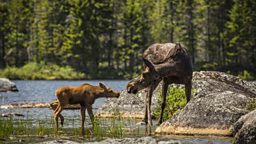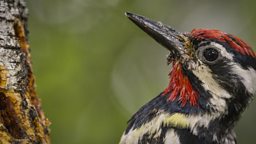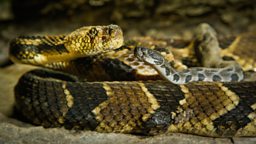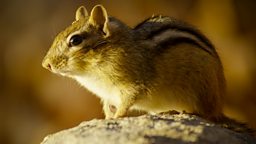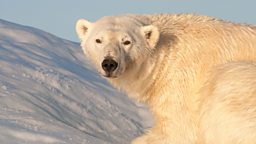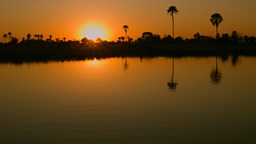New England explained...
by Paul Williams, Producer
New England is made up of 6 states in the northeastern corner of America. It stretches from Maine in the North to Connecticut in the South. It's a place that I have had a love affair with for many years. Upon leaving University I spent a few years living in the New England forest, where I taught people of all ages about the rich ecosystem and fascinating wildlife. It was a wonderful time of discovery for me, and one that led to me working in the 成人快手 Natural History Unit when I returned to the UK. I was overjoyed to be given the opportunity to produce a film about this magical corner of America, and visit a place that I had fallen in love with 15 years earlier.
Stone walls
To me New England is a beautiful, ever-changing forest that belies a deep and surprising history. Stone walls thread through the forest and along them run chipmunks that use them as highways. These endless piles of boulders, remain from a time when the entire forest was cleared by British settlers, and much of New England was farmland surrounded by stone walls. By the mid-1800's many of these farms were abandoned, as people headed west, in search of better farmland – and gold! With everyone gone, the trees grew back, and today this new forest is richer with maples and oaks, making the fall more colourful than ever before.
Beavers
Every New England lake has a family of beavers that busily repairs their dams - a seemingly endless task. I recall canoeing alongside the resident of my local lake when I lived in New England, and watching as his dexterous hands manipulated the logs and branches to craft his river-damming masterpiece. Cameraman Christian Munoz-Donozo, knew of a place in Massachusetts where he had filmed Beavers many years earlier, and he was able to return to discover that this dam had grown in size to over 50 metres long. Over several weeks he gained the trust of the residents who were busily repairing the damage caused by the spring melt. Beavers are key characters in the story of the New England forest. They fell millions of trees every year and leave many hardwoods, like maples and oaks, to grow - trees which provide the .
Moose
Where there are beavers there’s usually a moose - New England's biggest animal, but also one of the shyest. Named by the Algonquin Native Americans as Moosu, meaning ‘he who strips off’, they are leaf eating machines and can strip a branch clean in seconds. The best place to see them is in Baxter State Park, Maine, where one lake is so rich in aquatic plants that a bit of patience is usually rewarded with a sighting. We were lucky enough that early one morning, two females, one with twins and the other with a single calf, emerged from the forest to enjoy the cool water. According to the park's wildlife experts this was likely the first time that these young babies had left the cover of the forest. It was a special and tender moment as we watched from the shore. It wasn’t long before a pair of big bulls, adorned with their fast growing antlers, also arrived to strut their stuff just a few metres in front of us - but it was the .
Sapsucker
Walk through any forest in the spring and there’s one sound that you are sure to hear - the tap, tap, tapping of the yellow bellied sapsucker. The males fly all the way from Mexico, in advance of the females, to prepare their territory. These birds have a serious sugar addiction and they waste no time in satisfying it, they tap deep into the trees' vessels, creating wells that weep with the trees' sugary sap. This is sweet enough that even hummingbirds, who have arrived before the flowers open, can survive by raiding the sapsucker's wells. The story of how this bird raises and feeds their chicks has never been filmed before, and it was a task that called upon the skills of cameraman Michael Male, who has been filming birds for more than 40 years. After eventually finding a nest in a sturdy tree, he built a platform 10 metres high. Over several weeks he gained the trust of a family of sapsuckers before he was able to carefully film their story, from inside the nest.
Rattlesnake hunt
Having worked on David Attenborough’s series Life in Cold Blood, 8 years ago, I was very excited that we had been the first to film a rattlesnake successfully hunting in the wild. We had used remote motion-triggered cameras, but the hunt happened at night and so the images were black and white, and fairly low resolution. Technology has moved on significantly since then, and I wanted to attempt to film this behaviour again - in HD and in colour. This time however it would be an even greater challenge. Filming a snake hunting is one of the most difficult moments to observe and film in nature. Most snakes eat less than once every few weeks, and when and where they will hunt is impossible to predict. In New England, there are only a few hundred rattlesnakes in the wild and we needed the help of Dr Anne Stengle just to find one. By using camera traps, specially developed by Peter Abdu, we eventually filmed a successful hunt from two fixed cameras. We even captured the moment one lucky mouse made a very close escape.
Caterpillars
One of the most surprising things we discovered in New England is just how remarkable the caterpillars are. Many have incredible camouflage that parallels the story of the leaves through the year. In the winter, looper caterpillars hide amongst the barren branches, and look like twigs - they awake with the warmth of the spring to feed on the growing buds. With the spring in full swing, some loopers take on a different disguise - amongst the flowers they stick petals to their backs. This strangeness continues through the year - some, like the swallowtail caterpillars, have eye spots to look like snakes, while others look like big spiders, but the most cunning disguise of all is to look like the part of a leaf that they’ve already eaten. Many New England caterpillars look like leaf damage - filling in the gaps with their own bodies makes them less visible to predators like birds. By the fall, as the leaves change colour, some caterpillars also change too! Swallowtails swap the green costume of summer for a golden coat, while others turn red and orange. Eventually, many caterpillars climb to the edge of a leaf and fall to the forest floor. Here they pupate amongst the leaf litter, and will emerge as a moth in the spring ready to unleash a new wave of attacks on the forest. It was thanks to the passion of Sam Jaffe, of the caterpillar lab, that we were able to film so many of New England’s wonderful species.
The New England forest provided us with many fascinating wildlife stories, but it was the forest itself that had to be central to this film, and key to this was capturing the magic of its transformation. From the close-up details of an individual leaf, to the changes that can be seen from space, a range of techniques were used to reveal these incredible processes like never before.

